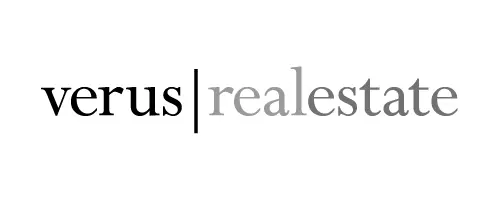SERBIA
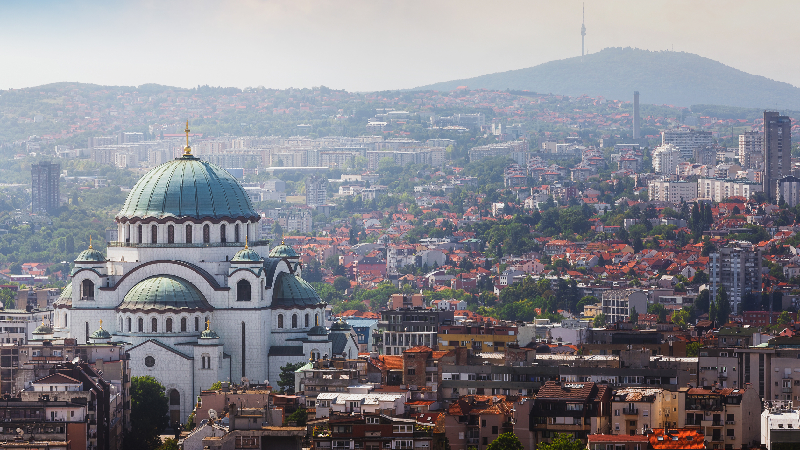
Serbia is a small and fast-growing country located in southeastern Europe and surrounded by Hungary, Romania, Bulgaria, Macedonia, Albania, Montenegro, Bosnia and Herzegovina and Croatia. Thanks to its highways (Corridors 10 and 11) and river network (the total length of navigable rivers and channels is 1,395 km), especially Danube river which passes through the country and its capital city Belgrade, Serbia is connected with other important countries such as Turkey, Greece, Austria, Germany, Slovakia, Italy and many more. Furthermore, Serbia has a very favorable geographical position and mild climate.
Serbia’s capital city is Belgrade, located at the confluence of the Sava and Danube rivers. With a very rich history, Belgrade is one of the oldest cities in Europe and is the largest city in the region with a population of over 1,600,000 people. Besides Belgrade, some of the other important cities are: Novi Sad, Nis, Kragujevac, Subotica, Sabac, Cacak, Krusevac, Kraljevo, Uzice.
Today, Serbia is a democratic European country with a clear course towards the European Union. In March 2012 the European Council granted the status of candidate country to Serbia and decided to open accession negotiations in June 2013 (which were formally launched in January 2014).
Let’s explore the local real estate market and try to figure out if investing into Serbia’s properties is worth it.
Belgrade and Novi Sad - Two Main Serbian Destinations
Belgrade
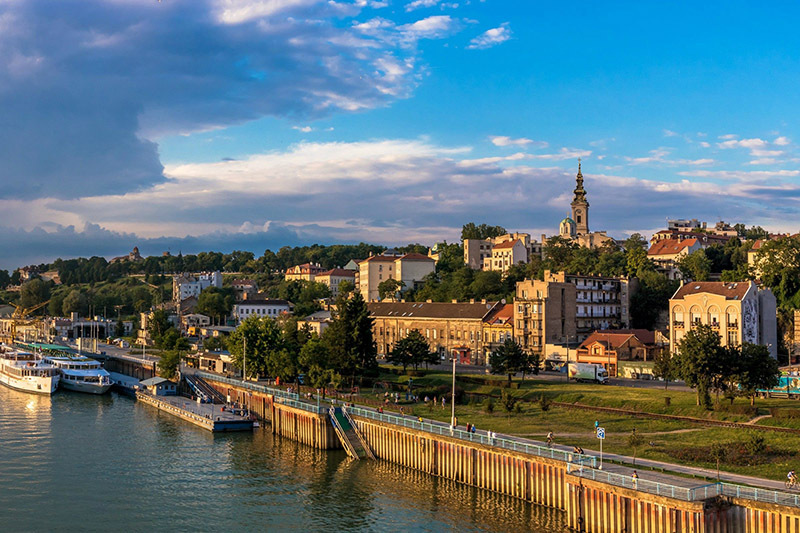
Belgrade is the capital and largest city in Serbia and an essential stop on any Balkan holiday. It is fairly famous for its impressive nightlife, young population and overall party atmosphere. Of course, as one of the oldest continually inhabited cities in the world, there is plenty more to it than a few trendy night clubs, cool street art and lots of kebab shops. As it turns out, there are far more things to do in Belgrade than one could imagine.
Explore the Kalemegdan Fortress and Park
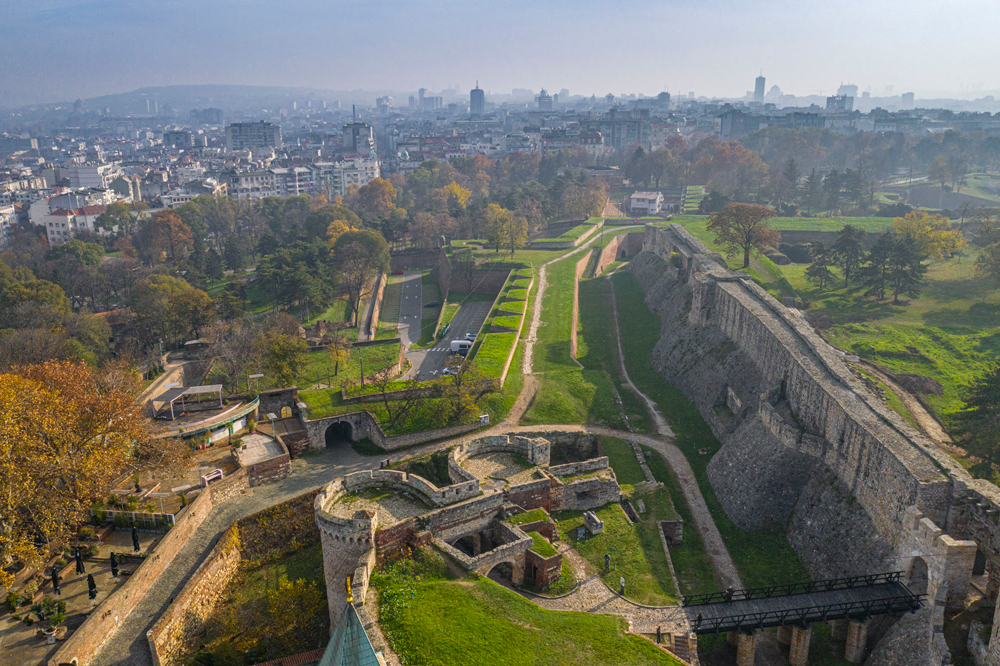
Belgrade’s ceaselessly vigilant guardian sits at the nexus of the Danube and Sava rivers, overlooking the plains to the north and west. Archaeological finds suggest that this site has been inhabited from the Neolithic era, but since then the fortifications have been destroyed and rebuilt dozens of times. Most of the present structure dates from the 18th and early 19th centuries, and comprises the old walled city – the Upper and Lower Towns – and the riverside Kalemegdan Park, the setting for August’s riotous Beer Fest.
Wander The Streets of Skadarlija: The Bohemian Quarter

Skadarlija is the bohemian quarter where all the writers, artists, and intellectuals were spending time for the last two centuries. Nowadays it is a tourist location, but it is still filled with locals that love good food, wine, music, and a bohemian lifestyle. It is a pedestrian area covered in cobblestones, where the first restaurants opened in the early 1800s. Some call it “Serbian Montmartre”. This place is not to be missed if you like experiencing local life, the best food in the city, seeing art on display, and listening to street performers.
Browse Belgrade’s Night Markets

These hugely popular events occur every month at one of Belgrade’s open-air Green Markets. Typically held on a Friday evening between 6pm and midnight, they feature live music and stalls run by delicatessens, homeware designers, restaurants, winemakers and artists. The venue changes each time, but keep your eye open for those hosted by the Kalenic and Zeleni Venac markets, where some of the biggest and best events have been held in the past.
Visit the Nikola Tesla Museum
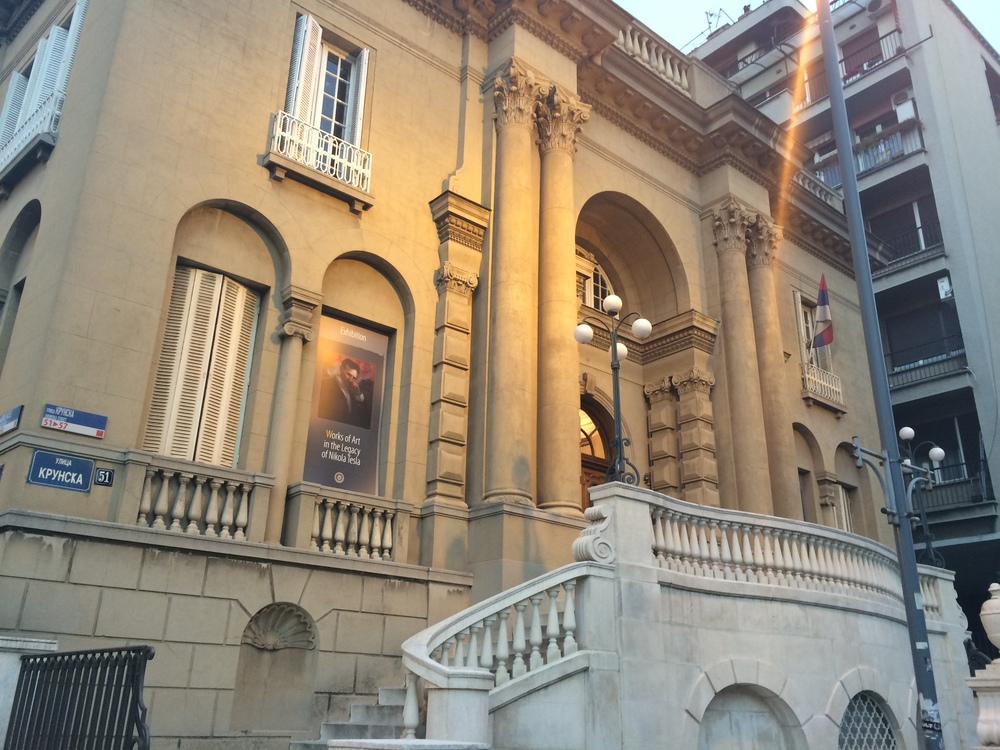
This museum is dedicated to the life and works of Nikola Tesla (1856-1943), a Serbian-American engineer and inventor who was instrumental in developing today’s alternating current (AC) systems. Opened in 1955, it’s the only museum in the world devoted to Tesla, who lapsed into obscurity after his death in a New York hotel room. Inside, it features over a thousand technical exhibits demonstrating his ingenuity. The permanent collection also showcases the inventor’s drawings for new gadgets and his 2,400-volume library.
Peek inside the Church of St. Sava

There is one structure that dominates Belgrade’s skyline, and luckily it isn’t any of the monstrosities on the waterfront. It’s the Church of St Sava, the enormous house of worship that stands proudly as one of the biggest Orthodox temples on the planet. It looks huge no matter where in the city you are – its vastness aptly demonstrates the real intimidating power of the people's faith.
Novi Sad
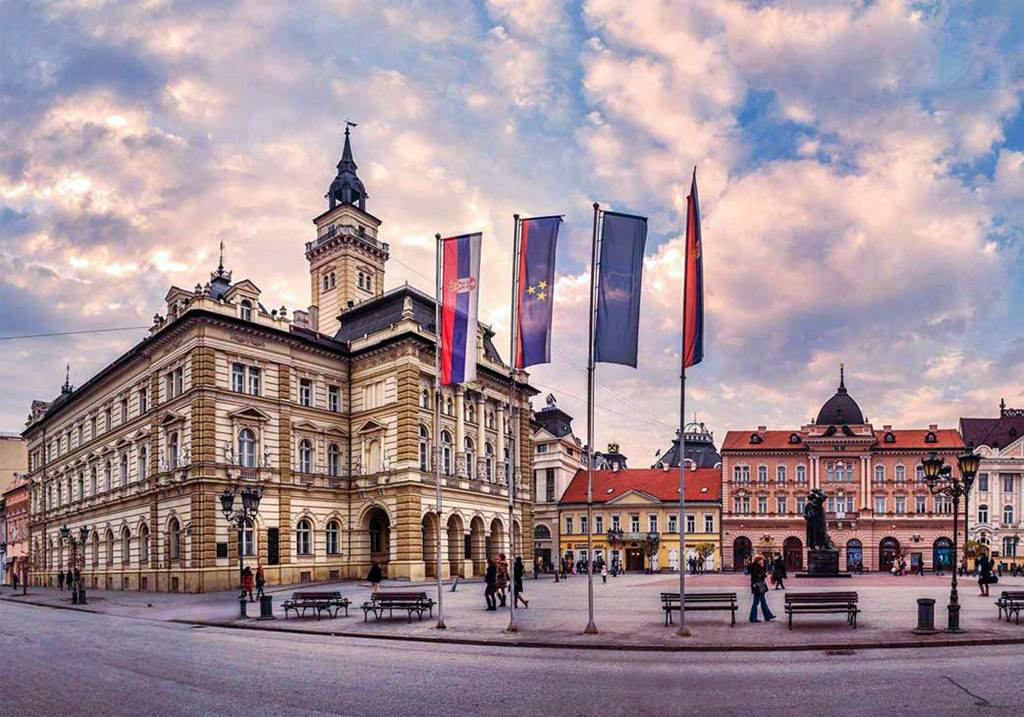
Tourists who visit Serbia always tend to make the same mistake: they’ll go to Belgrade but skip Novi Sad, which is just an hour away. The city was named European Youth Capital for 2019 and along with Kaunas in Lithuania and Esch in Luxembourg, will share the title of European Capital of Culture in 2022 (postponed from 2021). This will make Novi Sad the first non-EU city in history to be awarded the honor. With its grandiose architecture, vibrant art and music scene, and welcoming locals, it’s a no-brainer to rent a car, pack your travel essentials and come to Novi Sad.
Cradled by a crook in the Danube river and shielded by a 17th century fortress, Novi Sad could have been ‘just another’ medieval town. But Serbia’s second-largest city and capital of the autonomous Vojvodina Province doesn’t rest on its laurels. Hints of old-world Habsburg charm can be found on the workbenches of Novi Sad’s leather shops, carved into its historic facades, and worn on the faces of the dapper locals who frequent its suave cafes and bustling markets.
Novi Sad experiences warm summers and relatively cold winters like the rest of Serbia. In July and August, temperatures reach up to 81°F, while January and February can get as cold as 27°F. Therefore, spring and fall are the best seasons to visit the city filled with many attractions.
Discover The Dazzling Churches And Synagogue
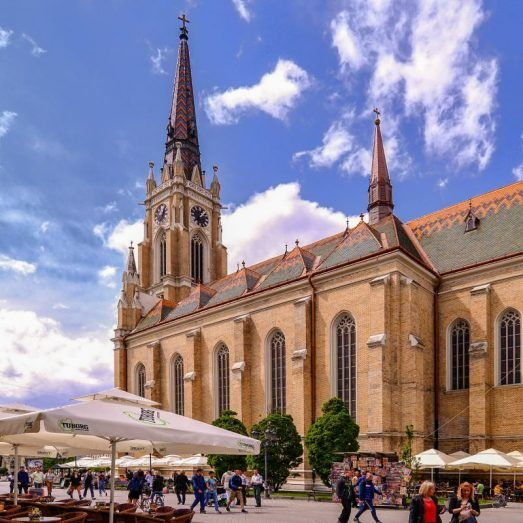
The Name of Mary Church, Novi Sad’s biggest Catholic church, dominates Trg Slobode and tops most tourists’ list of things to do in Novi Sad. The square-facing entrance is topped with a 76-meter-high bell tower.
The cavernous church interior is modestly decorated with a white roof and stained glass windows. Its most impressive design features are without a doubt the roof gables and spire, both covered with colorful Zsolnay tiles. These are the same Hungarian-made porcelain tiles used on rooftops in Vienna, Budapest, Zagreb, and elsewhere throughout the former empire. Try crossing the garden to the row of nearby restaurants to get a good view of the colorful mosaic.
Behind the cathedral, you’ll find Novi Sad’s main Orthodox cathedral. Saint George’s is the seat of the Serbian Orthodox Eparchy of Bačka and strolling distance from the Bishop’s House. The church was finished in 1905 and is topped with a lovely clock tower. The interior decoration is more lavish than The Name of Mary, as is the way with Catholic and Orthodox churches.
Amble Down The Main Street
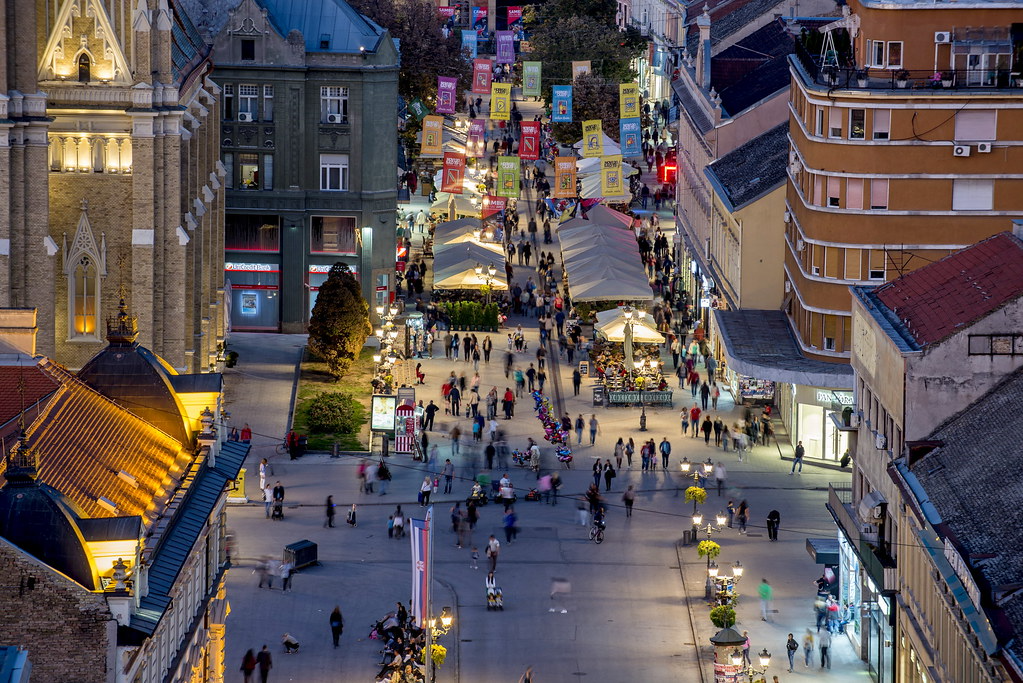
To reach the Orthodox cathedral from the main square, you’ll need to take Zmaj Jovina, Novi Sad’s main pedestrianized street. The wide boulevard, the city’s main artery, is clotted with tables and umbrellas belonging to outdoor cafes and bistros. Unlike shades-of-gray Belgrade, everything is painted in pastels.
Beautiful passageways with plaster ceilings cut into the sides of buildings reveal courtyards filled with bakeries, clothing boutiques and yet more cafes. Don’t miss ducking down a few of the arcades to see what lies behind Zmaj Jovina’s facades. At the north-eastern end, the street opens out onto a small square dominated by the Bishop’s Palace.
Visit The Bishop’s Palace
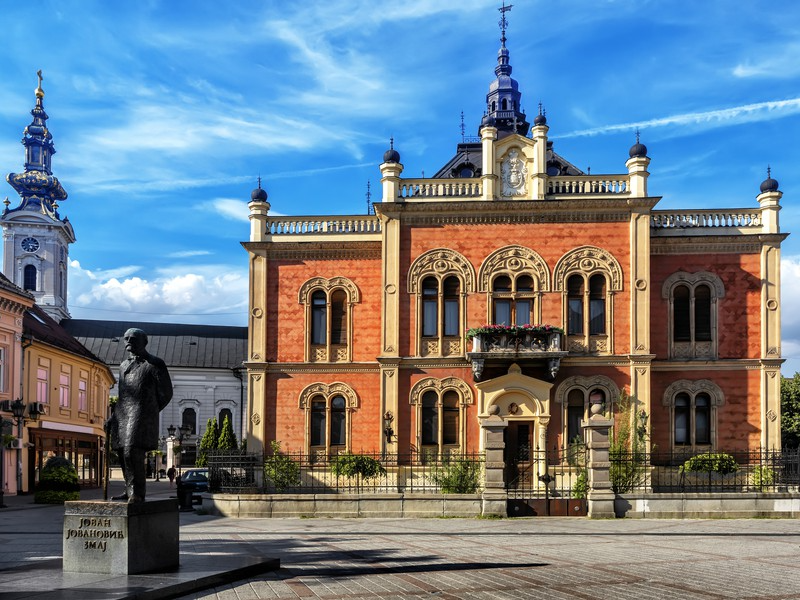
The Bishop’s Palace isn’t just a palace by name: It’s the chief residence of the Bishop of Bačka Eparchy. Given that it’s still used as a private residence, visitors aren’t allowed inside. Instead, you’re left to marvel at the three-story house’s exquisite facade, which is covered with subtle terracotta-coloured tiles that shimmer in the midday sun.
The design is the work of Vladimir Nikolić and Julijo Anika, and follows a Serbian-Byzantine style. The Serbian poet, Jovan Jovanovic Zmaj, who was born in Novi Sad, is memorialized in the statue out front.
Stroll Through Danube’s Park
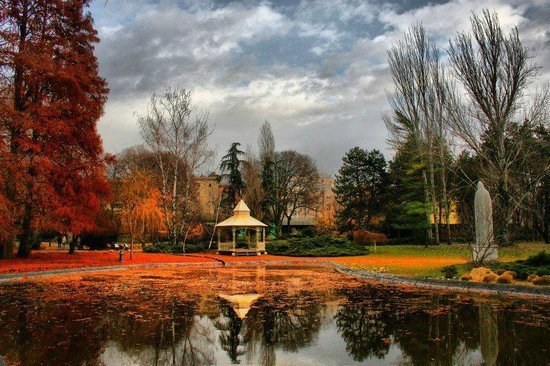
One of Novi Sad’s biggest and most popular green spaces, Danube’s Park is a cross between a public park and an arboretum. 250 species of trees, flowers and plants, including many rare varietals such as English oak, line the park’s snaking pathways and the edge of an artificial lake.
The park sits right on the Danube waterfront and serves as a front garden for more of Novi Sad’s finest homes and the nearby Museum of Vojvodina. Locals have been gathering here since the park was first designated in 1895.
Explore Petrovaradin, Novi Sad’s Fortress
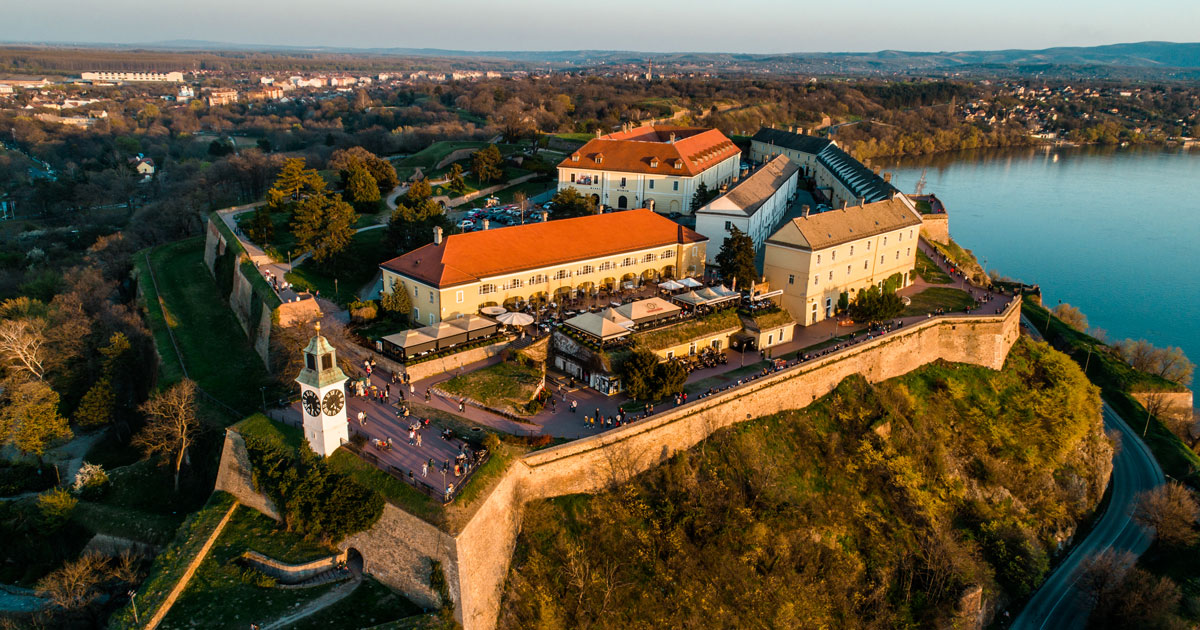
Petrovaradin, Novi Sad’s most iconic landmark, is nicknamed ‘Gibraltar on the Danube’. The cornerstone of the present-day structure was laid in 1692 atop the remains of ramparts, city walls, monasteries and other left-overs from the area’s time under Roman, Turkish and Hungarian rule.
Unlike many of Serbia’s other fortresses which were single-mindedly destroyed in the interwar period, Petrovaradin was spared. It lives on as one of the country’s most impressive monuments. To get up to the fortress, visitors must first navigate a winding stairway followed by a walk through a long, dark tunnel. Petrovaradin has two levels, an upper and lower section separated by a moat and connected by arched gates, drawbridges, uphill paths and subterranean tunnels.
The Reciprocity Principle
Since the days of Tito, the Yugoslav communist dictator, Serbia has been sitting in between the western and eastern powers, trying to play a complicated balancing act.
Maintaining such policy of course leads to inevitable setbacks and constant pressure. But with a set of geopolitically inclined politicians, and decades of experience in the matter, this policy is starting to yield long term dividends. According to the IBM Global Location Trends 2020 report, Serbia maintained its global number one spot as the country that creates the most FDI jobs per million inhabitants which is quite impressive.
The residential market in Serbia is growing at a rapid rate, especially in the capital of Serbia – Belgrade, and the second largest city in Serbia – Novi Sad, the center of Serbian IT industry. In comparison to the other European cities, real estate prices in Serbia are considerably lower.
For example, the prices of real estate in Belgrade range from 1,500 to 2,500 euros per square meter, depending on the location and quality of the real estate. The prices in Novi Sad are somewhat lower, ranging from 1,300 to 2,000 euros per square meter. In the rest of the country, the prices are even lower – 900 euros per square meter.
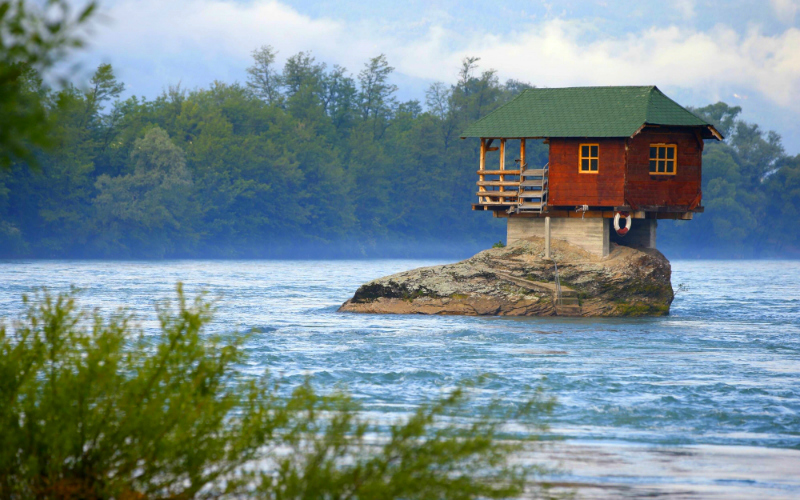
One of the advantages of investing in real estate in Serbia is the fact that there is no minimum amount required, so you can buy property at a lower price and still apply for residency. However, there are certain conditions that foreigners have to meet to purchase real estate in Serbia. The reciprocity principle is the general rule that governs property and property rights acquisition in Serbia according to the Foundations of Property Law Relations of 1996.
The rights of legal and natural persons operating in the Republic of Serbia and the rights of inactive individuals are different.
FOREIGN INDIVIDUALS
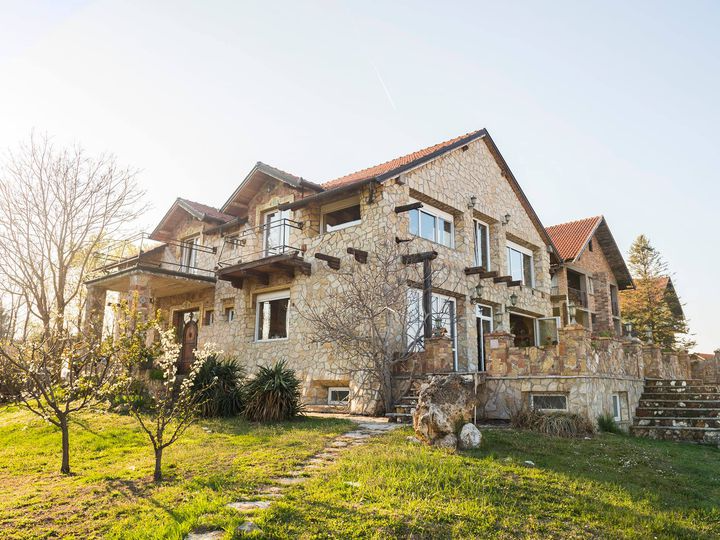
Foreign natural persons can acquire real estate in Serbia through the transfer of ownership, which can be inter vivos and mortis causa. Inter vivos represents the transfer of ownership that takes place during the lifetime of the transferer and the acquirer (e.g. gift contract, sales contract), and mortis causa refers to the transfer of ownership that begins to take effect only after the death of a person (e.g. testament or inheritance).
Whichever of these transfers is in question – for the transfer to actually take place – one condition must be met: the reciprocity principle between Serbia and the country of the foreign individual must exist.
Contractual reciprocity exists if Serbia has signed a bilateral agreement with the state of birth of a foreign natural person, which regulates the matter of acquiring real estate for foreigners. The list of countries with which Serbia has reciprocity, i.e. the list of countries with which such bilateral agreements have been signed, can be found in the table below:
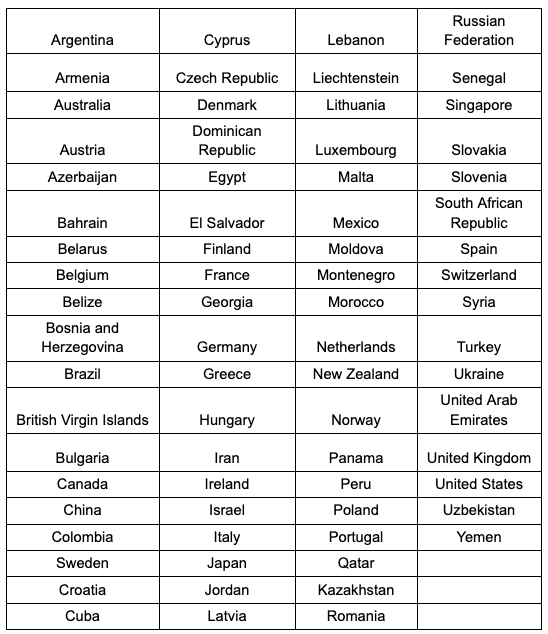
If the country of your origin is not listed in the table above, the possibility to buy real estate in Serbia still exists – provided that there is de facto reciprocity.
De facto reciprocity implies that the law of the state in question allows Serbian citizens to acquire real estate in that country under the same conditions as Serbia allows their citizens. It is interesting that it is not enough for such provisions to be only prescribed by law, but it must also be shown that they are respected in practice.
When it comes to foreign individuals and their acquisition of real estate in Serbia, there is another specificity that should be specially taken into account. In particular, foreign natural persons, who perform professional activity in Serbia, can acquire any form of real estate in the country but only if that real estate is necessary to perform that activity.
On the other hand, foreign natural persons, who do not perform professional activities in Serbia, have the opportunity to buy an apartment or a house in Serbia without restrictions but do not have the right to buy any land (except the land that belongs to that apartment or house).
FOREIGN LEGAL ENTITIES
Acquisition of real estate in Serbia is not only possible for foreign individuals, but also for foreign legal entities.
Just like foreign natural persons, foreign legal entities, in order to acquire ownership over real estate in the country, have to first and foremost meet the condition for reciprocity. Therefore, as already explained, the foreign legal entities that acquire property by inter vivos transfer, should determine in each individual case whether Serbia has concluded a bilateral agreement with their country of origin. If the answer is negative, the foreign legal entity should initiate the mentioned procedure to explain the existence of reciprocity before the Ministry of Justice of the Republic of Serbia. For the foreign legal entities that acquire ownership by mortis causa transfer, there is a presumption of the existence of de facto reciprocity.
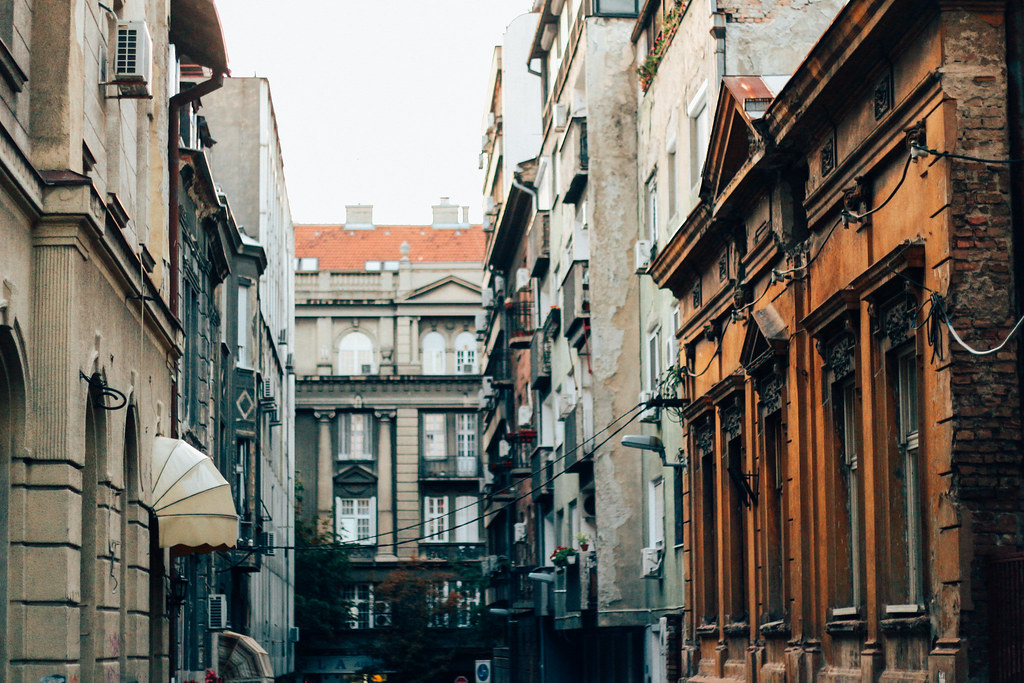
The conditions for acquiring real estate in Serbia for foreign legal entities are still stricter than those for foreign individuals due to the following circumstances: foreign legal entities do not have the opportunity to acquire Serbian real estate if they do not have a company in Serbia. The opinion of the Ministry of Justice is of crucial importance in this case as well, considering that the Ministry must confirm that the activity of a certain legal entity is considered to be the activity performed in Serbia.
Real Estate Prices in Serbia – Average, The Highest And The Lowest
Last year, the cheapest apartments for purchase in Serbia were in Majdanpek and the most expensive in Belgrade. The most sought-after apartments are those in new buildings in residential complexes that offer additional services. Also, we will see yet another increase in real estate prices in the coming years.
Average Real Estate Prices in Serbian Cities in 2019
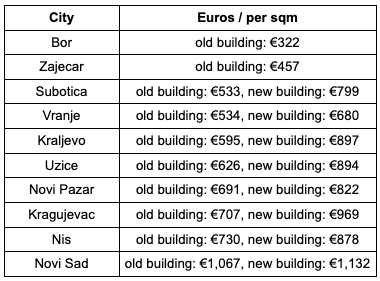
When it comes to Belgrade, the cheapest real estate is in Rakovica, costing from 500 to 1,432 euros per sqm. In terms of apartments in old buildings, the most expensive apartments are in the municipality of Stari Grad, with an average price of 2,000 euros per sqm.
Prices in Belgrade’s Municipalities (Old And New Buildings):
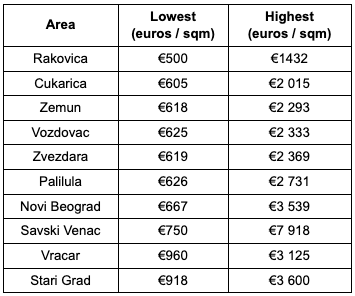
Real Estate in Belgrade Comparing To Other European Cities
Real estate in Belgrade is extremely expensive compared to other regional capitals. Deloitte shares interesting data on the price of the new buildings. In 2020, the average prices of the new buildings were as follows:
- €1741 per m2 in Belgrade (population 1.4 million)
- €1440 per m2 in Bucharest, Romania (population 1.8 million)
- €1144 per m2 in Sofia, Bulgaria (population 1.4 million)
- €2,207 per m2 in Budapest, Hungary (population 1.8 million)
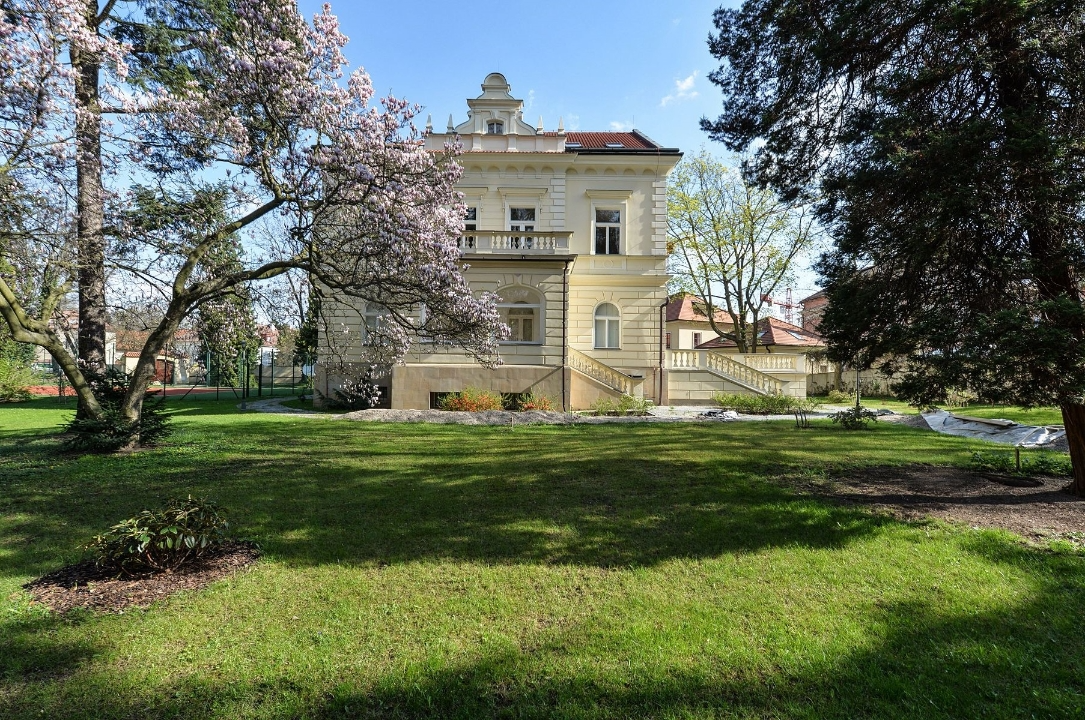
Prices have gone up significantly in all cities in 2021, particularly in Sofia. But overall, to many it may be unclear why Belgrade would command such premium prices over comparable cities such as Sofia and Bucharest, which are both wealthier and part of the EU.
The discount to Budapest, visible in the new build segment, partially skewed by most new builds being in “New Belgrade”, does not quite apply to the core historical center of Belgrade. In this part of the city, prices for pretty, historical buildings are comparable to those in the best districts of Budapest.
Are Belgrade historical buildings worth more than Budapest’s? In the view of many, they shouldn’t be. The city has less potential for tourism, and the reality is that we are dealing with a country with a per capita GDP of $7,700 versus Hungary’s $16,900. By all measures, making a real estate investment in Belgrade means buying into a market that is either over-priced, or ran ahead of itself.
Overview of Key Neighborhoods To Make A Real Estate Investment in Belgrade, Serbia
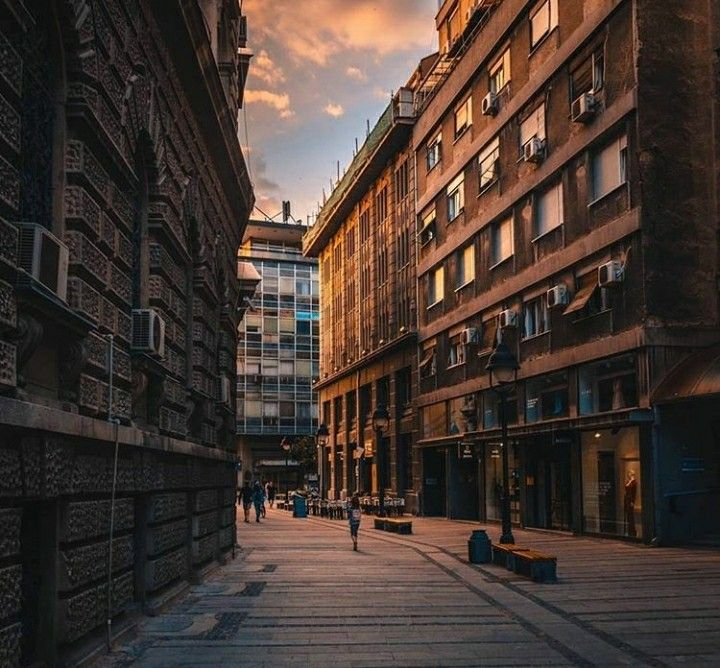
When you arrive in Belgrade you are bombarded with ads for new buildings, and everyone you speak to has a very strong opinion on the real estate market and where to invest. A strong opinion does not mean that these people are right. People in the Balkans just have strong opinions – it’s part of their communication culture.
Old Town
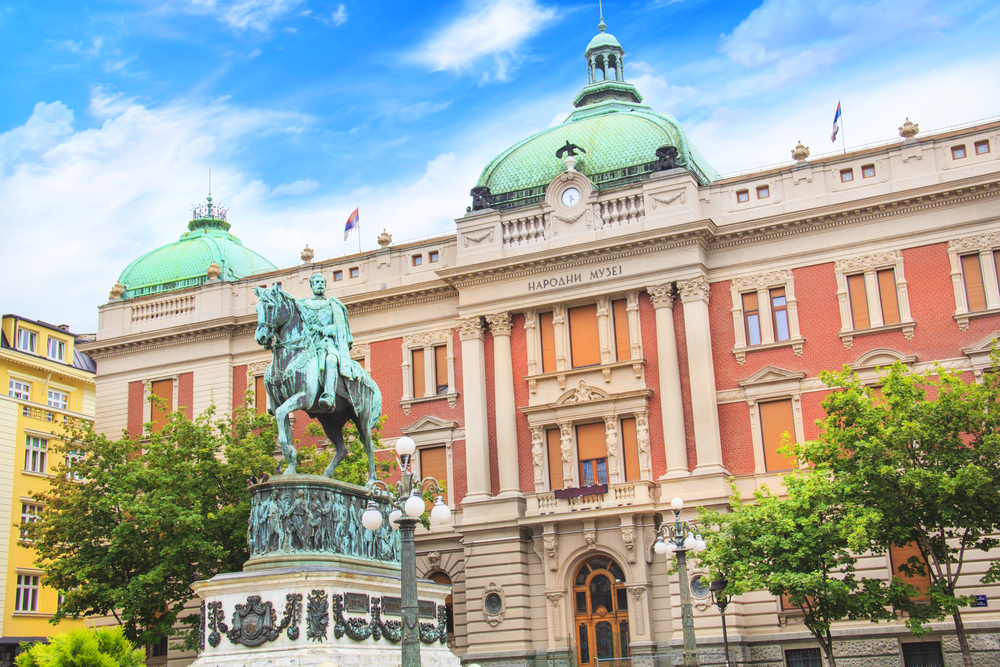
Highest per sqm price in Belgrade along with Vraćar. This area is a sure bet. It’s the heart of historical Belgrade, and loaded with tourist activity. However, it is not the nicest place to live. There are many shops around, but not necessarily the best, and it can feel overtouristed. Parking is also extremely problematic. Locals with a lot of money prefer to live in other areas, but still, it is a sure bet.
Dorćol
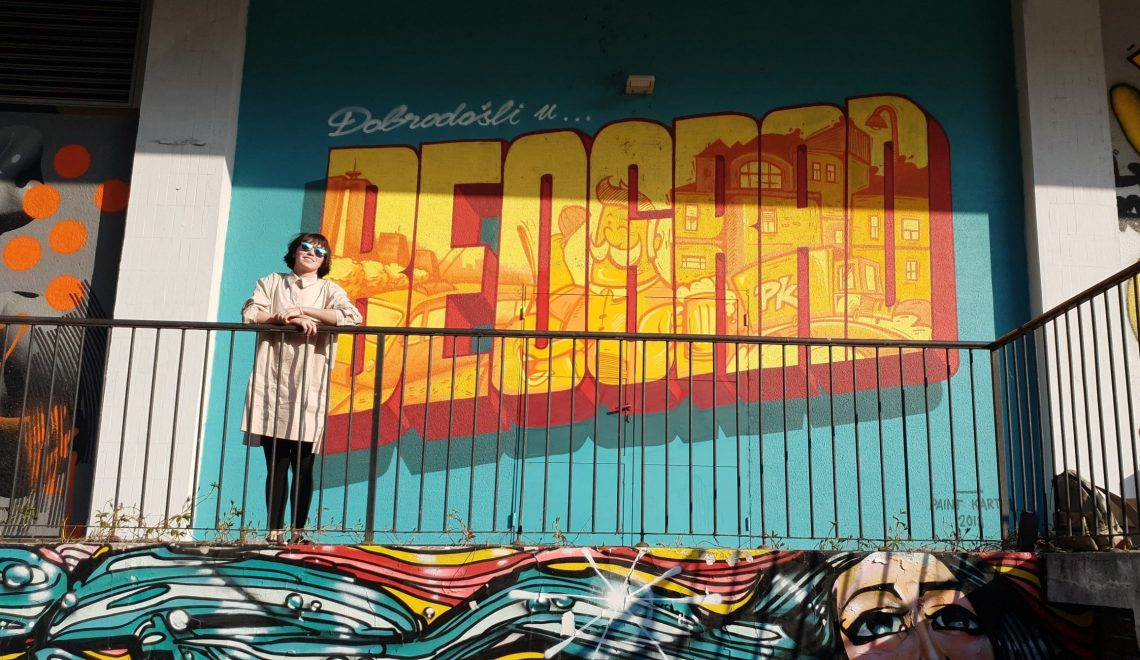
One can divide Dorćol into two areas – upper Dorćol near the Old Town, and lower Dorćol near the Danube river. Upper Dorćol is packed with historical buildings, without all the middle-of-the-range shops that can be found in the Old Town. These quaint little streets are lined with cool bars and restaurants, making it extremely livable. The price per sqm is almost the same as in the Old Town, with the difference being that it is better from a lifestyle perspective. One would get more bang for buck here than in the Old Town, and more potential tenants. The play is to buy into a historical building and keep for the long haul.
On the other hand, lower Dorćol is not very popular amongst locals, and thus comes at a significant discount to upper Dorćol. It’s easy to see why: upper Dorćol consists of beautiful historical buildings, while lower Dorćol mainly has buildings from the late Yugoslav years that are not looking like they’re in a great shape at all. However, the opportunity here comes with buying into new buildings with parking.
Vraćar
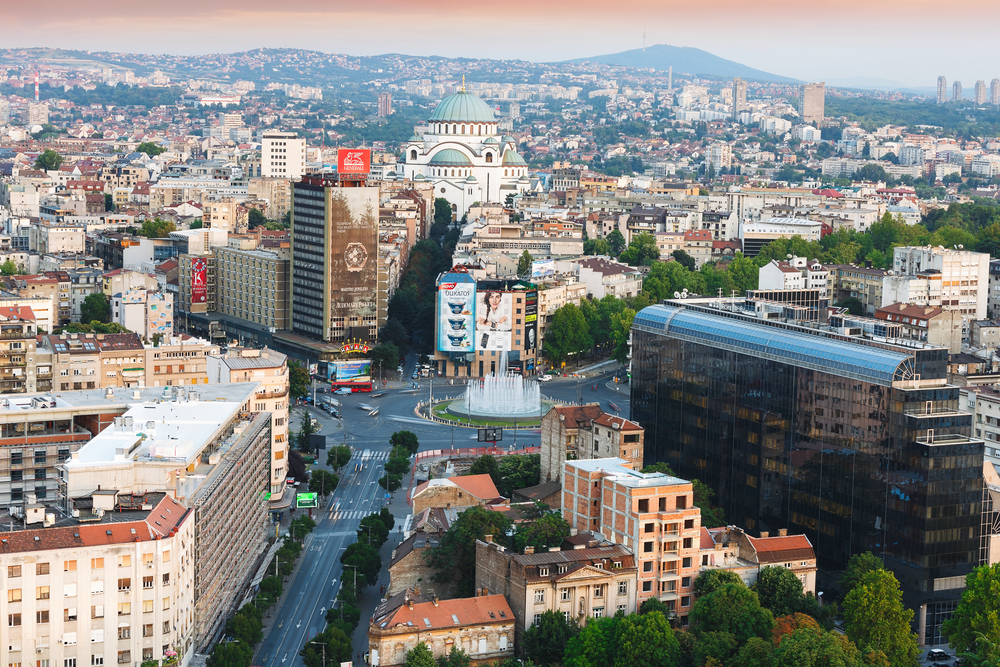
This one is a great mystery to many. It’s one of Belgrade’s most expensive neighborhoods, prices are comparable to Old Town and upper Dorćol, but objectively, it is not a very attractive neighborhood. The whole area is a random collection of ugly Yugoslav buildings (majority), some nice historical buildings (minority), new buildings, and cute cafes. Some people prefer it here to the Old Town due to ease of access and better public transport, but apart from the lovely Orthodox Cathedral, the neighborhood is just not it. The thing is that there is a gap between perceived value and objective value, and that upside is much more limited in the long run in this area compared to other areas.
Palilula
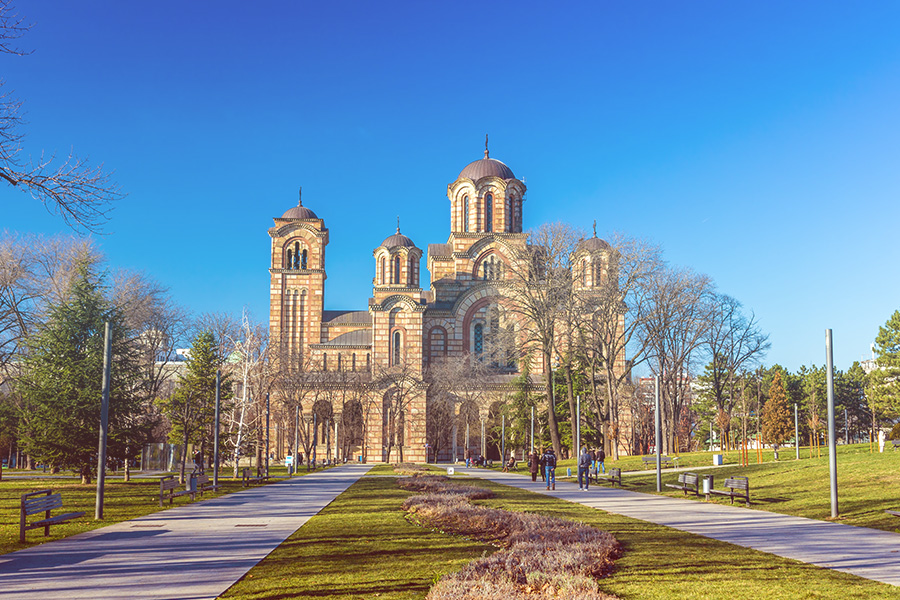
Up & coming area. Currently not very lovely and packed with Yugoslav buildings, but its proximity to the center and parks make it an interesting play for those wanting to invest in new buildings. This is definitely an area that will improve over the years.
New Belgrade
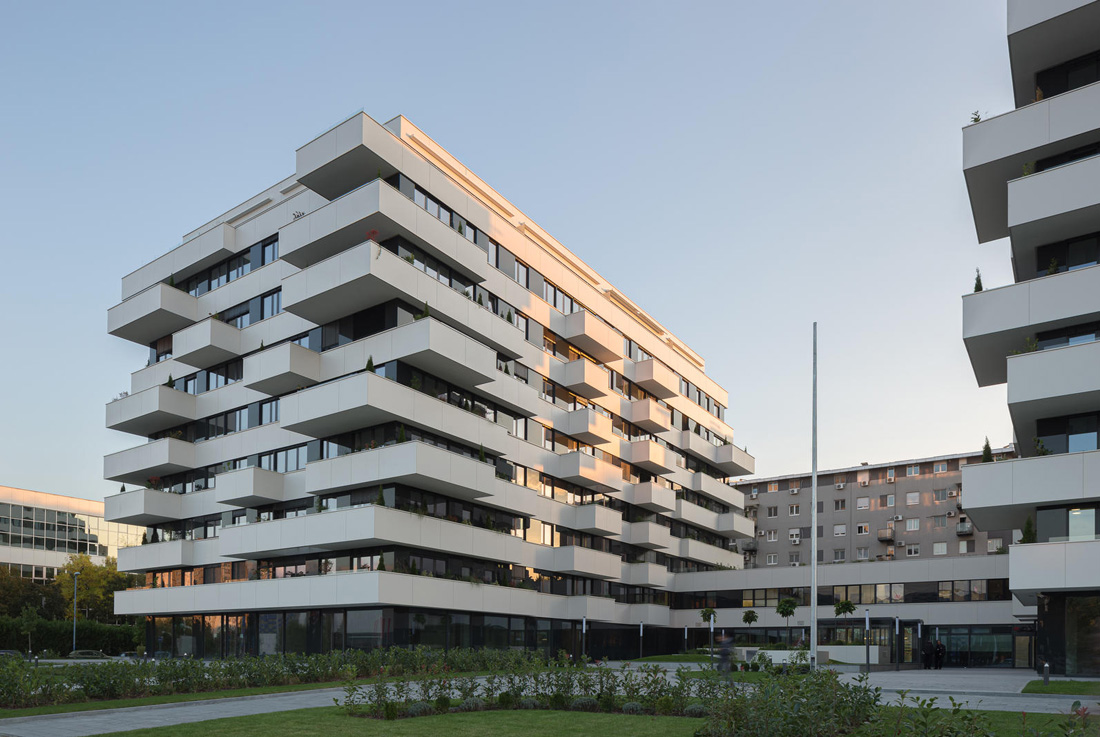
This is the great debate in Belgrade: “New Belgrade or not”. Most new developments in Belgrade are in New Belgrade. The two sides of the river are completely different. While “old” Belgrade is packed and dense, New Belgrade is comprised of (extremely) large avenues and free space. Parking there is a complete non-issue, which is a huge plus in a city where public transport is slightly underwhelming. Do note that Belgrade does not have a metro system, which is surprising for such a large city. Many local families like to move to New Belgrade because of parking, and more space for children, as well as the more modern amenities.
The question is whether or not New Belgrade is a good investment. Well, not really. A good place to live and a good investment are not always synonymous. In this particular case, there is simply too much available land in New Belgrade. So you have pockets of old Yugoslav communist-type blocks, then areas with buildings from the 1990s, then from the 2000s’, etc. The core issue is that as new developments come online, older ones lose rental appeal. As an owner or renter, it does not matter too much. But as an investor, this makes investing in New Belgrade a lot trickier and subject to the whims of what is considered “cool”. Vacancy rates in older development seem to be quite high, too. So unless you live in Belgrade, and can live and breathe the market, we would recommend to stay away from investing in New Belgrade.
Belgrade Waterfront
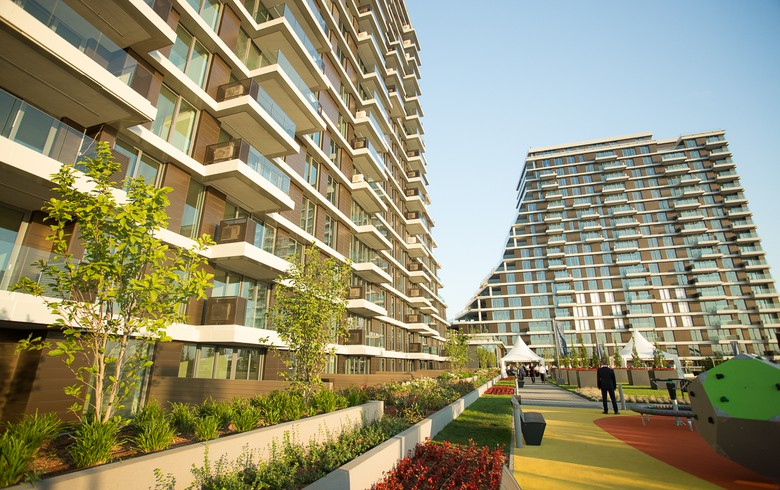
This project is the highlight of the real estate industry in the Balkans. The Serbian government teamed up (1/3) with a large UAE developer (2/3) to completely reinvent one of the banks of the Sava river. Old industrial buildings were destroyed, and now dozens of high-end buildings are popping up along a brand new promenade. All buildings have concierge service, some have gyms and swimming pools. There is even a tower being built to house the St. Regis hotel. Apartments in this particular building go for about €7,000 - €9,000 per sqm. The Balkan’s largest luxury mall was also built there and is already in operation. Finally, a W Hotel is set to open in a few years.
Starting prices for apartments in some of the buildings are about €3,000 per sqm. One can expect gross yields of about 3-4%. However, only three types of investors make money in such developments:
- The developers themselves
- The management company of the development
- Investors who bought off-plan before it was clear the project would be a success.
Nevertheless, in the case of the Belgrade Waterfront, yes, the prices are high, but this luxury development is actually in the heart of Belgrade, and not some 20-30 minutes away from the core as such projects often are. There are not so many advantages, and the value may not be so great, but still, many people prefer to invest here.
Overall though, we would recommend taking a closer look at the “old” part of Belgrade. We see better value there, though, we use the term “value” in a relative way. However, from a lifestyle point of view, the Belgrade Waterfront is very attractive in its own way, which might be great for some people wanting to obtain residency in Serbia through real estate ownership.
Taxes On Real Estate in Serbia
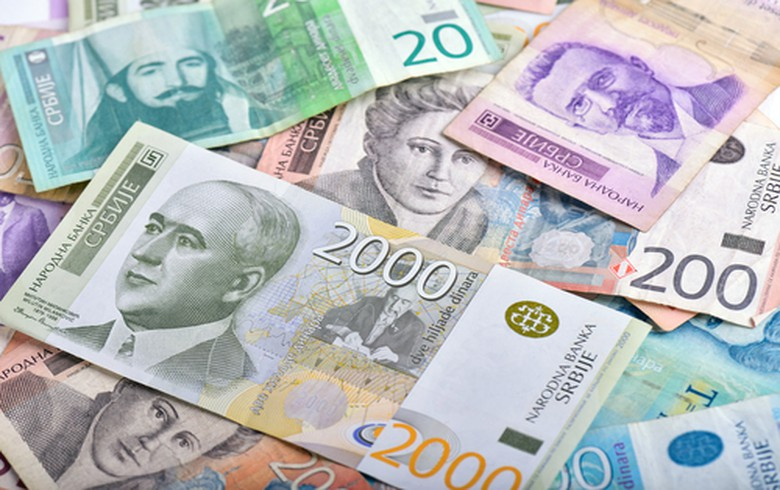
VAT
The general value added tax (VAT) rate stands at 20%. The reduced VAT rate is 10%. Value added tax is applicable on the first transfer of ownership rights for newly built buildings constructed after 1 January 2005. Residential buildings are subject to a reduced VAT rate, while all other buildings are subject to the general VAT rate. In addition, a VAT reverse charge scheme is in place to govern the sale of real estate and the provision of construction services. Under certain conditions buyers of buildings and construction services can apply the reverse charge mechanism. Such measures are intended to reduce the costs of VAT financing in real estate and construction deals.
Renting of immovable property is subject to 20% VAT. Accommodation in tourist facilities is subject to 10% VAT. Renting for residential purposes is tax exempt.
Real Estate Transfer Tax
The transfer of ownership for real estate which is not subject to VAT is subject to transfer tax at a rate of 2.5%. The taxpayer is the seller (i.e. transferor of the ownership right, intellectual property right, or the person who leases or gets use of the construction land). Some minor notary fees are due as well, typically a few hundred euros.
Property Tax
In Serbia, tax on property is paid by the titleholder of the property rights (ownership, right of use, tenure, etc.). The property tax base is the market value for most entities instead of its book value. Each municipality issues detailed rules on how to calculate property tax liability. Entities applying fair value accounting use the book value as the tax base. Property tax rate may not exceed 0.4%. Property tax returns are submitted by 31 March of the current year.
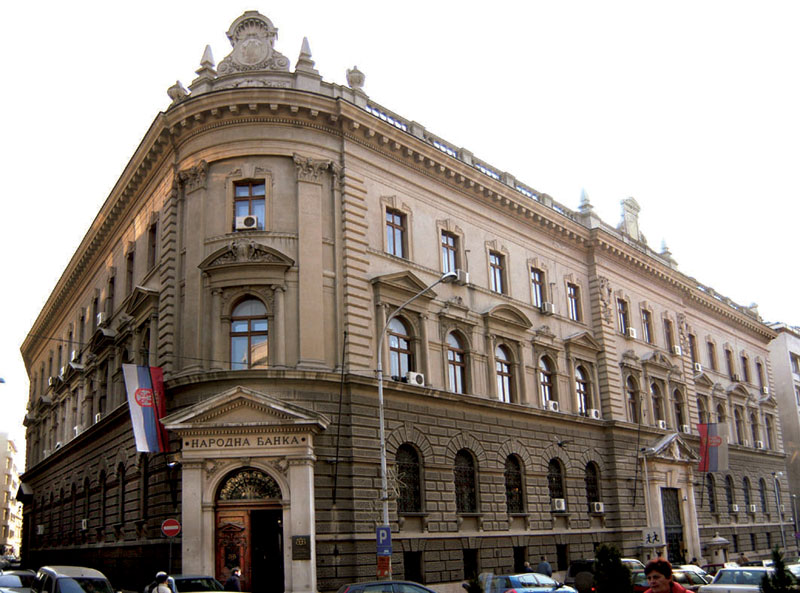
Corporate Income Tax And Capital Gains
Corporate income tax is levied at 15% on resident entities and branches of non- resident entities. A resident entity is a legal entity which is incorporated or has a place of effective management and control within the territory of Serbia. Resident legal entities pay tax on their worldwide income in the country. Non-resident entities pay tax on the income generated through a permanent establishment within the territory of Serbia.
The tax period is the calendar year, which may be altered by consecutive calendar 12-months period in accordance with the multinational company’s financial year (changes of the financial and tax year are subject to special administrative procedure). A CIT return for each year must be filed within 180 days from the end of the tax year. Corporate income tax liability is payable in monthly advanced payments (by the 15th day of the following month).
Corporate income tax payable is settled by the CIT return filing date. Upon request, a taxpayer may change its tax year to a period of any 12 consecutive months, but only if the foreign parent entity has a financial year which differs from the calendar year.
Taxable income is determined on the basis of accounting profit disclosed in the annual income statement, in accordance with International Financial Reporting Standards, and is subject to further adjustments in the tax balance.
Capital gains are disclosed separately in the tax balance and are subject to 15% tax. The capital gain is the difference between the sale and purchase price of assets (real estate, shares/securities, intellectual property rights, investment units, digital assets). If this difference is negative, a capital loss is reported. Capital gains realized by non-resident entities which do not have a permanent establishment in Serbia, are subject to 20% tax unless otherwise prescribed by a respective double tax treaty.
To Sum Up:
- VAT of 10% is typically payable when you buy an apartment in a new building. Do note that you can gradually recuperate VAT if you rent out the apartment, and buy it using a local Serbian LLC.
- Yearly property tax up to the value of 0.4% of the property. Typically the property tax is much higher as a percentage in new buildings than in old buildings.
- There is a transfer tax of 2.5% on secondary market real estate in Serbia, to be paid by the buyer. Some minor notary fees are due as well, typically a few hundred euros.
- Rental income gets taxed at a flat 20%. You can deduct a flat 25% as expenses from the gross rental income. The net rental income tax is therefore 15%.
Residence Permit: Temporary and Permanent Visa
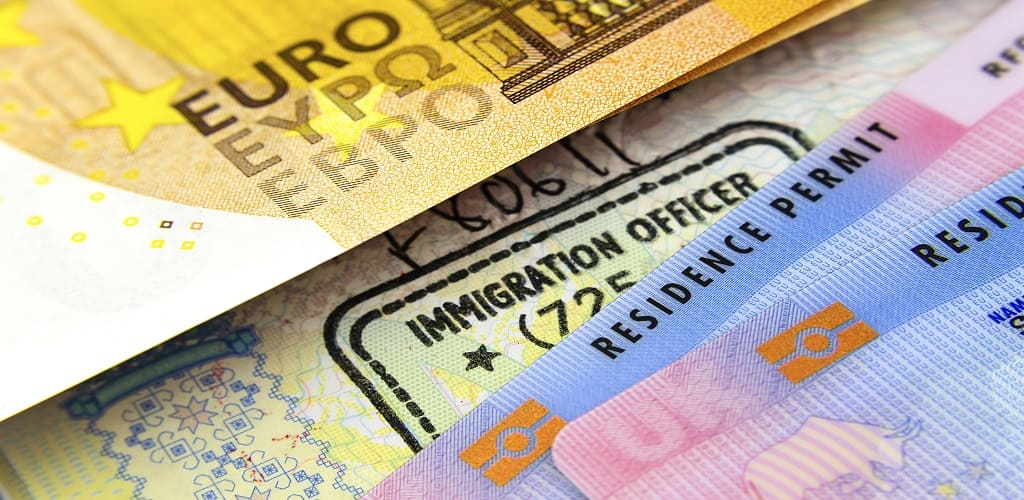
Serbia is a welcoming country for both, foreigners who want to set up investments here or for those who want to live and work. In this direction, they need to obtain a temporary or a permanent residence in Serbia, depending on the time they wish to spend and the purposes in this sense.
How To Obtain A Temporary Visa in Serbia in 2022
Temporary visas are issued for foreign citizens who want to relocate to Serbia and stay more than 90 days in the country, but not exceeding one year. This type of visa is normally granted to those who want to study, work, or join the family members in Serbia in 2022. The main condition in this sense is to apply from Serbia, as soon as you entered the country. One of the benefits is that a temporary visa comes with a work permit. As for the document requirements for such visa, the main applicant will need to show the following:
- Valid Passport;
- Proof of financial self-sufficiency;
- Proof of health insurance;
- Two photographs, format 4×3 cm
- The White Card registration;
- Visa application form.
Besides the above-mentioned requirements, immigration officers will invite foreigners for a short interview before granting the temporary visa.
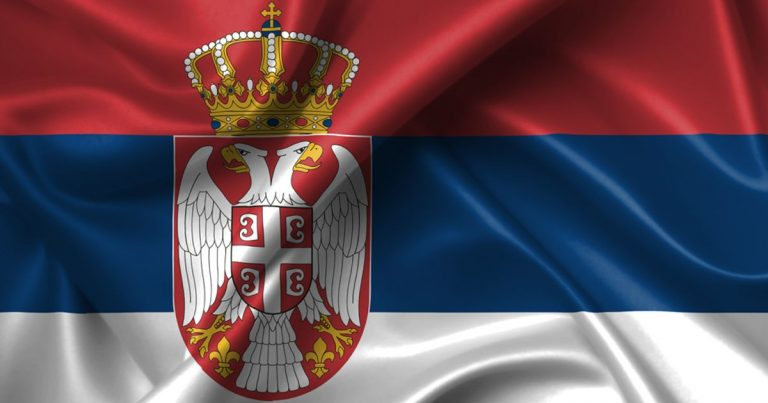
How To Obtain A Permanent Visa in Serbia in 2022
Permanent visas in Serbia are granted to foreigners who intend to relocate to Serbia for a long time and who want to apply for Serbian citizenship. There are certain conditions imposed for foreigners who want to obtain a permanent visa in Serbia and these are related to the time spent in this country - at least, 5 years without interruptions. Also, such visa is granted to foreigners who are married to Serbian citizens for at least 3 years. As for the documents necessary for permanent visa application in Serbia, the applicant must submit the following:
1. Valid personal or service passport with the temporary visas on the pages;
2. Proof of paid fees
3. Photocopy of passport (pages with authorized temporary stays)
4. Two photographs, format 4×3 cm
5. Medical certificate (issued on the form of the Serbian Medical Society),
6. Certificate or other documents on education
7. Birth certificate
8. Proof of means of supporting yourself
9. Filled-out form of request
To Sum Up:
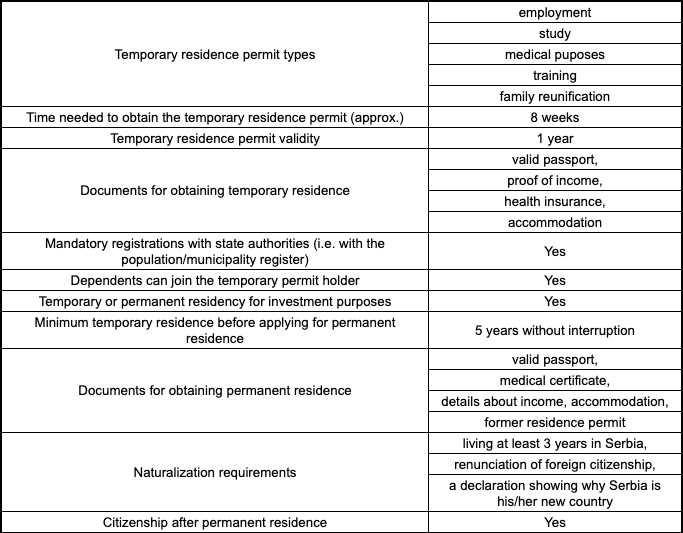
It is important to understand that unlike neighboring Montenegro, for example, Serbia does not have a formal Citizenship by Investment program. However, it is government policy to reward foreigners who help the country in a very significant manner with Serbian Citizenship and Passport. The application must be made in person to the Serbian government, preferably with the help of a local lawyer who is experienced in such matters.
The incumbent government of the Republic is allowed at lawyer's discretion to grant citizenship of Serbia to individuals who make a substantial contribution to the country – economic or otherwise. This discretion has previously been used to grant citizenship to various sportspeople and actors: for instance, Ralph Fiennes and Steven Seagal.
The naturalization process into Serbian citizenship takes in total 8 years. It requires at least 3 years of permanent residence, which itself takes 5 years before you can obtain permanent residence status. Be aware that you will be requested to forfeit your previous nationality in order to become naturalized. Serbia only allows dual citizenship in certain cases.
Best Websites to Find Property in Serbia
- Halo Oglasi (https://www.halooglasi.com/)
- Nekretnine.rs (https://www.nekretnine.rs/)

Serbia is a small and fast-growing country located in southeastern Europe and surrounded by Hungary, Romania, Bulgaria, Macedonia, Albania, Montenegro, Bosnia and Herzegovina and Croatia. Thanks to its highways (Corridors 10 and 11) and river network (the total length of navigable rivers and channels is 1,395 km), especially Danube river which passes through the country and its capital city Belgrade, Serbia is connected with other important countries such as Turkey, Greece, Austria, Germany, Slovakia, Italy and many more. Furthermore, Serbia has a very favorable geographical position and mild climate.
Serbia’s capital city is Belgrade, located at the confluence of the Sava and Danube rivers. With a very rich history, Belgrade is one of the oldest cities in Europe and is the largest city in the region with a population of over 1,600,000 people. Besides Belgrade, some of the other important cities are: Novi Sad, Nis, Kragujevac, Subotica, Sabac, Cacak, Krusevac, Kraljevo, Uzice.
Today, Serbia is a democratic European country with a clear course towards the European Union. In March 2012 the European Council granted the status of candidate country to Serbia and decided to open accession negotiations in June 2013 (which were formally launched in January 2014).
Let’s explore the local real estate market and try to figure out if investing into Serbia’s properties is worth it.
Belgrade and Novi Sad - Two Main Serbian Destinations
Belgrade

Belgrade is the capital and largest city in Serbia and an essential stop on any Balkan holiday. It is fairly famous for its impressive nightlife, young population and overall party atmosphere. Of course, as one of the oldest continually inhabited cities in the world, there is plenty more to it than a few trendy night clubs, cool street art and lots of kebab shops. As it turns out, there are far more things to do in Belgrade than one could imagine.
Explore the Kalemegdan Fortress and Park

Belgrade’s ceaselessly vigilant guardian sits at the nexus of the Danube and Sava rivers, overlooking the plains to the north and west. Archaeological finds suggest that this site has been inhabited from the Neolithic era, but since then the fortifications have been destroyed and rebuilt dozens of times. Most of the present structure dates from the 18th and early 19th centuries, and comprises the old walled city – the Upper and Lower Towns – and the riverside Kalemegdan Park, the setting for August’s riotous Beer Fest.
Wander The Streets of Skadarlija: The Bohemian Quarter

Skadarlija is the bohemian quarter where all the writers, artists, and intellectuals were spending time for the last two centuries. Nowadays it is a tourist location, but it is still filled with locals that love good food, wine, music, and a bohemian lifestyle. It is a pedestrian area covered in cobblestones, where the first restaurants opened in the early 1800s. Some call it “Serbian Montmartre”. This place is not to be missed if you like experiencing local life, the best food in the city, seeing art on display, and listening to street performers.
Browse Belgrade’s Night Markets

These hugely popular events occur every month at one of Belgrade’s open-air Green Markets. Typically held on a Friday evening between 6pm and midnight, they feature live music and stalls run by delicatessens, homeware designers, restaurants, winemakers and artists. The venue changes each time, but keep your eye open for those hosted by the Kalenic and Zeleni Venac markets, where some of the biggest and best events have been held in the past.
Visit the Nikola Tesla Museum

This museum is dedicated to the life and works of Nikola Tesla (1856-1943), a Serbian-American engineer and inventor who was instrumental in developing today’s alternating current (AC) systems. Opened in 1955, it’s the only museum in the world devoted to Tesla, who lapsed into obscurity after his death in a New York hotel room. Inside, it features over a thousand technical exhibits demonstrating his ingenuity. The permanent collection also showcases the inventor’s drawings for new gadgets and his 2,400-volume library.
Peek inside the Church of St. Sava

There is one structure that dominates Belgrade’s skyline, and luckily it isn’t any of the monstrosities on the waterfront. It’s the Church of St Sava, the enormous house of worship that stands proudly as one of the biggest Orthodox temples on the planet. It looks huge no matter where in the city you are – its vastness aptly demonstrates the real intimidating power of the people's faith.
Novi Sad

Tourists who visit Serbia always tend to make the same mistake: they’ll go to Belgrade but skip Novi Sad, which is just an hour away. The city was named European Youth Capital for 2019 and along with Kaunas in Lithuania and Esch in Luxembourg, will share the title of European Capital of Culture in 2022 (postponed from 2021). This will make Novi Sad the first non-EU city in history to be awarded the honor. With its grandiose architecture, vibrant art and music scene, and welcoming locals, it’s a no-brainer to rent a car, pack your travel essentials and come to Novi Sad.
Cradled by a crook in the Danube river and shielded by a 17th century fortress, Novi Sad could have been ‘just another’ medieval town. But Serbia’s second-largest city and capital of the autonomous Vojvodina Province doesn’t rest on its laurels. Hints of old-world Habsburg charm can be found on the workbenches of Novi Sad’s leather shops, carved into its historic facades, and worn on the faces of the dapper locals who frequent its suave cafes and bustling markets.
Novi Sad experiences warm summers and relatively cold winters like the rest of Serbia. In July and August, temperatures reach up to 81°F, while January and February can get as cold as 27°F. Therefore, spring and fall are the best seasons to visit the city filled with many attractions.
Discover The Dazzling Churches And Synagogue

The Name of Mary Church, Novi Sad’s biggest Catholic church, dominates Trg Slobode and tops most tourists’ list of things to do in Novi Sad. The square-facing entrance is topped with a 76-meter-high bell tower.
The cavernous church interior is modestly decorated with a white roof and stained glass windows. Its most impressive design features are without a doubt the roof gables and spire, both covered with colorful Zsolnay tiles. These are the same Hungarian-made porcelain tiles used on rooftops in Vienna, Budapest, Zagreb, and elsewhere throughout the former empire. Try crossing the garden to the row of nearby restaurants to get a good view of the colorful mosaic.
Behind the cathedral, you’ll find Novi Sad’s main Orthodox cathedral. Saint George’s is the seat of the Serbian Orthodox Eparchy of Bačka and strolling distance from the Bishop’s House. The church was finished in 1905 and is topped with a lovely clock tower. The interior decoration is more lavish than The Name of Mary, as is the way with Catholic and Orthodox churches.
Amble Down The Main Street

To reach the Orthodox cathedral from the main square, you’ll need to take Zmaj Jovina, Novi Sad’s main pedestrianized street. The wide boulevard, the city’s main artery, is clotted with tables and umbrellas belonging to outdoor cafes and bistros. Unlike shades-of-gray Belgrade, everything is painted in pastels.
Beautiful passageways with plaster ceilings cut into the sides of buildings reveal courtyards filled with bakeries, clothing boutiques and yet more cafes. Don’t miss ducking down a few of the arcades to see what lies behind Zmaj Jovina’s facades. At the north-eastern end, the street opens out onto a small square dominated by the Bishop’s Palace.
Visit The Bishop’s Palace

The Bishop’s Palace isn’t just a palace by name: It’s the chief residence of the Bishop of Bačka Eparchy. Given that it’s still used as a private residence, visitors aren’t allowed inside. Instead, you’re left to marvel at the three-story house’s exquisite facade, which is covered with subtle terracotta-coloured tiles that shimmer in the midday sun.
The design is the work of Vladimir Nikolić and Julijo Anika, and follows a Serbian-Byzantine style. The Serbian poet, Jovan Jovanovic Zmaj, who was born in Novi Sad, is memorialized in the statue out front.
Stroll Through Danube’s Park

One of Novi Sad’s biggest and most popular green spaces, Danube’s Park is a cross between a public park and an arboretum. 250 species of trees, flowers and plants, including many rare varietals such as English oak, line the park’s snaking pathways and the edge of an artificial lake.
The park sits right on the Danube waterfront and serves as a front garden for more of Novi Sad’s finest homes and the nearby Museum of Vojvodina. Locals have been gathering here since the park was first designated in 1895.
Explore Petrovaradin, Novi Sad’s Fortress

Petrovaradin, Novi Sad’s most iconic landmark, is nicknamed ‘Gibraltar on the Danube’. The cornerstone of the present-day structure was laid in 1692 atop the remains of ramparts, city walls, monasteries and other left-overs from the area’s time under Roman, Turkish and Hungarian rule.
Unlike many of Serbia’s other fortresses which were single-mindedly destroyed in the interwar period, Petrovaradin was spared. It lives on as one of the country’s most impressive monuments. To get up to the fortress, visitors must first navigate a winding stairway followed by a walk through a long, dark tunnel. Petrovaradin has two levels, an upper and lower section separated by a moat and connected by arched gates, drawbridges, uphill paths and subterranean tunnels.
The Reciprocity Principle
Since the days of Tito, the Yugoslav communist dictator, Serbia has been sitting in between the western and eastern powers, trying to play a complicated balancing act.
Maintaining such policy of course leads to inevitable setbacks and constant pressure. But with a set of geopolitically inclined politicians, and decades of experience in the matter, this policy is starting to yield long term dividends. According to the IBM Global Location Trends 2020 report, Serbia maintained its global number one spot as the country that creates the most FDI jobs per million inhabitants which is quite impressive.
The residential market in Serbia is growing at a rapid rate, especially in the capital of Serbia – Belgrade, and the second largest city in Serbia – Novi Sad, the center of Serbian IT industry. In comparison to the other European cities, real estate prices in Serbia are considerably lower.
For example, the prices of real estate in Belgrade range from 1,500 to 2,500 euros per square meter, depending on the location and quality of the real estate. The prices in Novi Sad are somewhat lower, ranging from 1,300 to 2,000 euros per square meter. In the rest of the country, the prices are even lower – 900 euros per square meter.

One of the advantages of investing in real estate in Serbia is the fact that there is no minimum amount required, so you can buy property at a lower price and still apply for residency. However, there are certain conditions that foreigners have to meet to purchase real estate in Serbia. The reciprocity principle is the general rule that governs property and property rights acquisition in Serbia according to the Foundations of Property Law Relations of 1996.
The rights of legal and natural persons operating in the Republic of Serbia and the rights of inactive individuals are different.
FOREIGN INDIVIDUALS

Foreign natural persons can acquire real estate in Serbia through the transfer of ownership, which can be inter vivos and mortis causa. Inter vivos represents the transfer of ownership that takes place during the lifetime of the transferer and the acquirer (e.g. gift contract, sales contract), and mortis causa refers to the transfer of ownership that begins to take effect only after the death of a person (e.g. testament or inheritance).
Whichever of these transfers is in question – for the transfer to actually take place – one condition must be met: the reciprocity principle between Serbia and the country of the foreign individual must exist.
Contractual reciprocity exists if Serbia has signed a bilateral agreement with the state of birth of a foreign natural person, which regulates the matter of acquiring real estate for foreigners. The list of countries with which Serbia has reciprocity, i.e. the list of countries with which such bilateral agreements have been signed, can be found in the table below:

If the country of your origin is not listed in the table above, the possibility to buy real estate in Serbia still exists – provided that there is de facto reciprocity.
De facto reciprocity implies that the law of the state in question allows Serbian citizens to acquire real estate in that country under the same conditions as Serbia allows their citizens. It is interesting that it is not enough for such provisions to be only prescribed by law, but it must also be shown that they are respected in practice.
When it comes to foreign individuals and their acquisition of real estate in Serbia, there is another specificity that should be specially taken into account. In particular, foreign natural persons, who perform professional activity in Serbia, can acquire any form of real estate in the country but only if that real estate is necessary to perform that activity.
On the other hand, foreign natural persons, who do not perform professional activities in Serbia, have the opportunity to buy an apartment or a house in Serbia without restrictions but do not have the right to buy any land (except the land that belongs to that apartment or house).
FOREIGN LEGAL ENTITIES
Acquisition of real estate in Serbia is not only possible for foreign individuals, but also for foreign legal entities.
Just like foreign natural persons, foreign legal entities, in order to acquire ownership over real estate in the country, have to first and foremost meet the condition for reciprocity. Therefore, as already explained, the foreign legal entities that acquire property by inter vivos transfer, should determine in each individual case whether Serbia has concluded a bilateral agreement with their country of origin. If the answer is negative, the foreign legal entity should initiate the mentioned procedure to explain the existence of reciprocity before the Ministry of Justice of the Republic of Serbia. For the foreign legal entities that acquire ownership by mortis causa transfer, there is a presumption of the existence of de facto reciprocity.

The conditions for acquiring real estate in Serbia for foreign legal entities are still stricter than those for foreign individuals due to the following circumstances: foreign legal entities do not have the opportunity to acquire Serbian real estate if they do not have a company in Serbia. The opinion of the Ministry of Justice is of crucial importance in this case as well, considering that the Ministry must confirm that the activity of a certain legal entity is considered to be the activity performed in Serbia.
Real Estate Prices in Serbia – Average, The Highest And The Lowest
Last year, the cheapest apartments for purchase in Serbia were in Majdanpek and the most expensive in Belgrade. The most sought-after apartments are those in new buildings in residential complexes that offer additional services. Also, we will see yet another increase in real estate prices in the coming years.
Average Real Estate Prices in Serbian Cities in 2019

When it comes to Belgrade, the cheapest real estate is in Rakovica, costing from 500 to 1,432 euros per sqm. In terms of apartments in old buildings, the most expensive apartments are in the municipality of Stari Grad, with an average price of 2,000 euros per sqm.
Prices in Belgrade’s Municipalities (Old And New Buildings):

Real Estate in Belgrade Comparing To Other European Cities
Real estate in Belgrade is extremely expensive compared to other regional capitals. Deloitte shares interesting data on the price of the new buildings. In 2020, the average prices of the new buildings were as follows:
- €1741 per m2 in Belgrade (population 1.4 million)
- €1440 per m2 in Bucharest, Romania (population 1.8 million)
- €1144 per m2 in Sofia, Bulgaria (population 1.4 million)
- €2,207 per m2 in Budapest, Hungary (population 1.8 million)

Prices have gone up significantly in all cities in 2021, particularly in Sofia. But overall, to many it may be unclear why Belgrade would command such premium prices over comparable cities such as Sofia and Bucharest, which are both wealthier and part of the EU.
The discount to Budapest, visible in the new build segment, partially skewed by most new builds being in “New Belgrade”, does not quite apply to the core historical center of Belgrade. In this part of the city, prices for pretty, historical buildings are comparable to those in the best districts of Budapest.
Are Belgrade historical buildings worth more than Budapest’s? In the view of many, they shouldn’t be. The city has less potential for tourism, and the reality is that we are dealing with a country with a per capita GDP of $7,700 versus Hungary’s $16,900. By all measures, making a real estate investment in Belgrade means buying into a market that is either over-priced, or ran ahead of itself.
Overview of Key Neighborhoods To Make A Real Estate Investment in Belgrade, Serbia

When you arrive in Belgrade you are bombarded with ads for new buildings, and everyone you speak to has a very strong opinion on the real estate market and where to invest. A strong opinion does not mean that these people are right. People in the Balkans just have strong opinions – it’s part of their communication culture.
Old Town

Highest per sqm price in Belgrade along with Vraćar. This area is a sure bet. It’s the heart of historical Belgrade, and loaded with tourist activity. However, it is not the nicest place to live. There are many shops around, but not necessarily the best, and it can feel overtouristed. Parking is also extremely problematic. Locals with a lot of money prefer to live in other areas, but still, it is a sure bet.
Dorćol

One can divide Dorćol into two areas – upper Dorćol near the Old Town, and lower Dorćol near the Danube river. Upper Dorćol is packed with historical buildings, without all the middle-of-the-range shops that can be found in the Old Town. These quaint little streets are lined with cool bars and restaurants, making it extremely livable. The price per sqm is almost the same as in the Old Town, with the difference being that it is better from a lifestyle perspective. One would get more bang for buck here than in the Old Town, and more potential tenants. The play is to buy into a historical building and keep for the long haul.
On the other hand, lower Dorćol is not very popular amongst locals, and thus comes at a significant discount to upper Dorćol. It’s easy to see why: upper Dorćol consists of beautiful historical buildings, while lower Dorćol mainly has buildings from the late Yugoslav years that are not looking like they’re in a great shape at all. However, the opportunity here comes with buying into new buildings with parking.
Vraćar

This one is a great mystery to many. It’s one of Belgrade’s most expensive neighborhoods, prices are comparable to Old Town and upper Dorćol, but objectively, it is not a very attractive neighborhood. The whole area is a random collection of ugly Yugoslav buildings (majority), some nice historical buildings (minority), new buildings, and cute cafes. Some people prefer it here to the Old Town due to ease of access and better public transport, but apart from the lovely Orthodox Cathedral, the neighborhood is just not it. The thing is that there is a gap between perceived value and objective value, and that upside is much more limited in the long run in this area compared to other areas.
Palilula

Up & coming area. Currently not very lovely and packed with Yugoslav buildings, but its proximity to the center and parks make it an interesting play for those wanting to invest in new buildings. This is definitely an area that will improve over the years.
New Belgrade

This is the great debate in Belgrade: “New Belgrade or not”. Most new developments in Belgrade are in New Belgrade. The two sides of the river are completely different. While “old” Belgrade is packed and dense, New Belgrade is comprised of (extremely) large avenues and free space. Parking there is a complete non-issue, which is a huge plus in a city where public transport is slightly underwhelming. Do note that Belgrade does not have a metro system, which is surprising for such a large city. Many local families like to move to New Belgrade because of parking, and more space for children, as well as the more modern amenities.
The question is whether or not New Belgrade is a good investment. Well, not really. A good place to live and a good investment are not always synonymous. In this particular case, there is simply too much available land in New Belgrade. So you have pockets of old Yugoslav communist-type blocks, then areas with buildings from the 1990s, then from the 2000s’, etc. The core issue is that as new developments come online, older ones lose rental appeal. As an owner or renter, it does not matter too much. But as an investor, this makes investing in New Belgrade a lot trickier and subject to the whims of what is considered “cool”. Vacancy rates in older development seem to be quite high, too. So unless you live in Belgrade, and can live and breathe the market, we would recommend to stay away from investing in New Belgrade.
Belgrade Waterfront

This project is the highlight of the real estate industry in the Balkans. The Serbian government teamed up (1/3) with a large UAE developer (2/3) to completely reinvent one of the banks of the Sava river. Old industrial buildings were destroyed, and now dozens of high-end buildings are popping up along a brand new promenade. All buildings have concierge service, some have gyms and swimming pools. There is even a tower being built to house the St. Regis hotel. Apartments in this particular building go for about €7,000 - €9,000 per sqm. The Balkan’s largest luxury mall was also built there and is already in operation. Finally, a W Hotel is set to open in a few years.
Starting prices for apartments in some of the buildings are about €3,000 per sqm. One can expect gross yields of about 3-4%. However, only three types of investors make money in such developments:
- The developers themselves
- The management company of the development
- Investors who bought off-plan before it was clear the project would be a success.
Nevertheless, in the case of the Belgrade Waterfront, yes, the prices are high, but this luxury development is actually in the heart of Belgrade, and not some 20-30 minutes away from the core as such projects often are. There are not so many advantages, and the value may not be so great, but still, many people prefer to invest here.
Overall though, we would recommend taking a closer look at the “old” part of Belgrade. We see better value there, though, we use the term “value” in a relative way. However, from a lifestyle point of view, the Belgrade Waterfront is very attractive in its own way, which might be great for some people wanting to obtain residency in Serbia through real estate ownership.
Taxes On Real Estate in Serbia

VAT
The general value added tax (VAT) rate stands at 20%. The reduced VAT rate is 10%. Value added tax is applicable on the first transfer of ownership rights for newly built buildings constructed after 1 January 2005. Residential buildings are subject to a reduced VAT rate, while all other buildings are subject to the general VAT rate. In addition, a VAT reverse charge scheme is in place to govern the sale of real estate and the provision of construction services. Under certain conditions buyers of buildings and construction services can apply the reverse charge mechanism. Such measures are intended to reduce the costs of VAT financing in real estate and construction deals.
Renting of immovable property is subject to 20% VAT. Accommodation in tourist facilities is subject to 10% VAT. Renting for residential purposes is tax exempt.
Real Estate Transfer Tax
The transfer of ownership for real estate which is not subject to VAT is subject to transfer tax at a rate of 2.5%. The taxpayer is the seller (i.e. transferor of the ownership right, intellectual property right, or the person who leases or gets use of the construction land). Some minor notary fees are due as well, typically a few hundred euros.
Property Tax
In Serbia, tax on property is paid by the titleholder of the property rights (ownership, right of use, tenure, etc.). The property tax base is the market value for most entities instead of its book value. Each municipality issues detailed rules on how to calculate property tax liability. Entities applying fair value accounting use the book value as the tax base. Property tax rate may not exceed 0.4%. Property tax returns are submitted by 31 March of the current year.

Corporate Income Tax And Capital Gains
Corporate income tax is levied at 15% on resident entities and branches of non- resident entities. A resident entity is a legal entity which is incorporated or has a place of effective management and control within the territory of Serbia. Resident legal entities pay tax on their worldwide income in the country. Non-resident entities pay tax on the income generated through a permanent establishment within the territory of Serbia.
The tax period is the calendar year, which may be altered by consecutive calendar 12-months period in accordance with the multinational company’s financial year (changes of the financial and tax year are subject to special administrative procedure). A CIT return for each year must be filed within 180 days from the end of the tax year. Corporate income tax liability is payable in monthly advanced payments (by the 15th day of the following month).
Corporate income tax payable is settled by the CIT return filing date. Upon request, a taxpayer may change its tax year to a period of any 12 consecutive months, but only if the foreign parent entity has a financial year which differs from the calendar year.
Taxable income is determined on the basis of accounting profit disclosed in the annual income statement, in accordance with International Financial Reporting Standards, and is subject to further adjustments in the tax balance.
Capital gains are disclosed separately in the tax balance and are subject to 15% tax. The capital gain is the difference between the sale and purchase price of assets (real estate, shares/securities, intellectual property rights, investment units, digital assets). If this difference is negative, a capital loss is reported. Capital gains realized by non-resident entities which do not have a permanent establishment in Serbia, are subject to 20% tax unless otherwise prescribed by a respective double tax treaty.
To Sum Up:
- VAT of 10% is typically payable when you buy an apartment in a new building. Do note that you can gradually recuperate VAT if you rent out the apartment, and buy it using a local Serbian LLC.
- Yearly property tax up to the value of 0.4% of the property. Typically the property tax is much higher as a percentage in new buildings than in old buildings.
- There is a transfer tax of 2.5% on secondary market real estate in Serbia, to be paid by the buyer. Some minor notary fees are due as well, typically a few hundred euros.
- Rental income gets taxed at a flat 20%. You can deduct a flat 25% as expenses from the gross rental income. The net rental income tax is therefore 15%.
Residence Permit: Temporary and Permanent Visa

Serbia is a welcoming country for both, foreigners who want to set up investments here or for those who want to live and work. In this direction, they need to obtain a temporary or a permanent residence in Serbia, depending on the time they wish to spend and the purposes in this sense.
How To Obtain A Temporary Visa in Serbia in 2022
Temporary visas are issued for foreign citizens who want to relocate to Serbia and stay more than 90 days in the country, but not exceeding one year. This type of visa is normally granted to those who want to study, work, or join the family members in Serbia in 2022. The main condition in this sense is to apply from Serbia, as soon as you entered the country. One of the benefits is that a temporary visa comes with a work permit. As for the document requirements for such visa, the main applicant will need to show the following:
- Valid Passport;
- Proof of financial self-sufficiency;
- Proof of health insurance;
- Two photographs, format 4×3 cm
- The White Card registration;
- Visa application form.
Besides the above-mentioned requirements, immigration officers will invite foreigners for a short interview before granting the temporary visa.

How To Obtain A Permanent Visa in Serbia in 2022
Permanent visas in Serbia are granted to foreigners who intend to relocate to Serbia for a long time and who want to apply for Serbian citizenship. There are certain conditions imposed for foreigners who want to obtain a permanent visa in Serbia and these are related to the time spent in this country - at least, 5 years without interruptions. Also, such visa is granted to foreigners who are married to Serbian citizens for at least 3 years. As for the documents necessary for permanent visa application in Serbia, the applicant must submit the following:
1. Valid personal or service passport with the temporary visas on the pages;
2. Proof of paid fees
3. Photocopy of passport (pages with authorized temporary stays)
4. Two photographs, format 4×3 cm
5. Medical certificate (issued on the form of the Serbian Medical Society),
6. Certificate or other documents on education
7. Birth certificate
8. Proof of means of supporting yourself
9. Filled-out form of request
To Sum Up:

It is important to understand that unlike neighboring Montenegro, for example, Serbia does not have a formal Citizenship by Investment program. However, it is government policy to reward foreigners who help the country in a very significant manner with Serbian Citizenship and Passport. The application must be made in person to the Serbian government, preferably with the help of a local lawyer who is experienced in such matters.
The incumbent government of the Republic is allowed at lawyer's discretion to grant citizenship of Serbia to individuals who make a substantial contribution to the country – economic or otherwise. This discretion has previously been used to grant citizenship to various sportspeople and actors: for instance, Ralph Fiennes and Steven Seagal.
The naturalization process into Serbian citizenship takes in total 8 years. It requires at least 3 years of permanent residence, which itself takes 5 years before you can obtain permanent residence status. Be aware that you will be requested to forfeit your previous nationality in order to become naturalized. Serbia only allows dual citizenship in certain cases.
Best Websites to Find Property in Serbia
- Halo Oglasi (https://www.halooglasi.com/)
- Nekretnine.rs (https://www.nekretnine.rs/)
